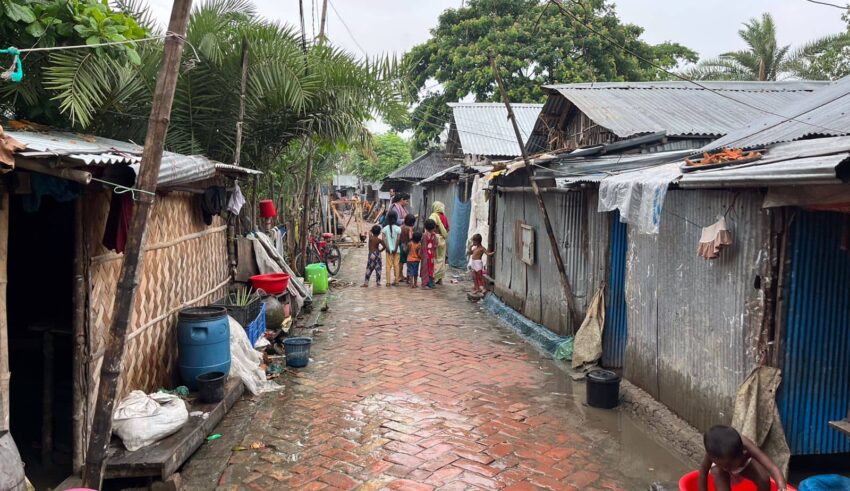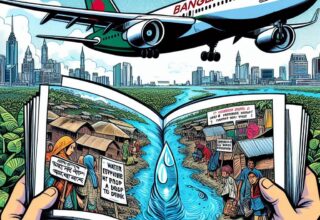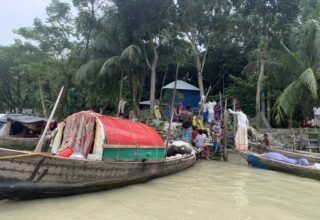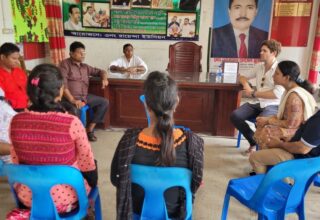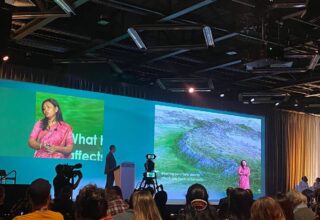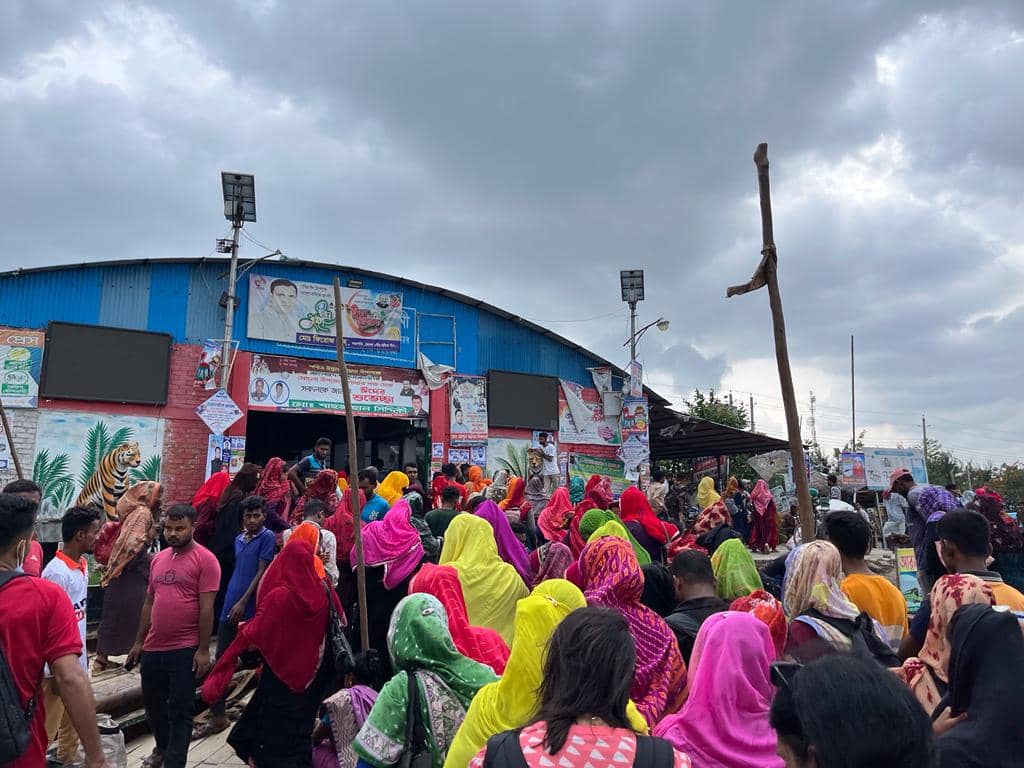
During my recent trip to Mongla, Bangladesh, I had the opportunity to visit two slum areas: Balur Math and Signal Tower Colony. These areas provided a unique glimpse into the daily lives, challenges, and resilience of the local community. Join me on this journey as I delve into the stories and experiences, I encountered in these two communities.
In the third week of June, we traveled to Mongla for three days. It was our research visit for the Inclusive Urban Infrastructure project, which is funded by the University of Sussex. Our purpose was to conduct the second round of household surveys in the informal settlement of Mongla municipality, as well as the assessment of the rainwater harvesting intervention implemented by our local partner Sushilon. It was my first time there and it was also my first field visit as an ICCCAD Intern. Many of my office colleagues have been to Mongla for field visits, which indicates that there are relevant activities or projects in the area that are of interest to ICCCAD. So, I thought that going on a field visit to Mongla can provide firsthand experience and insights that can be valuable for my work and personal growth.
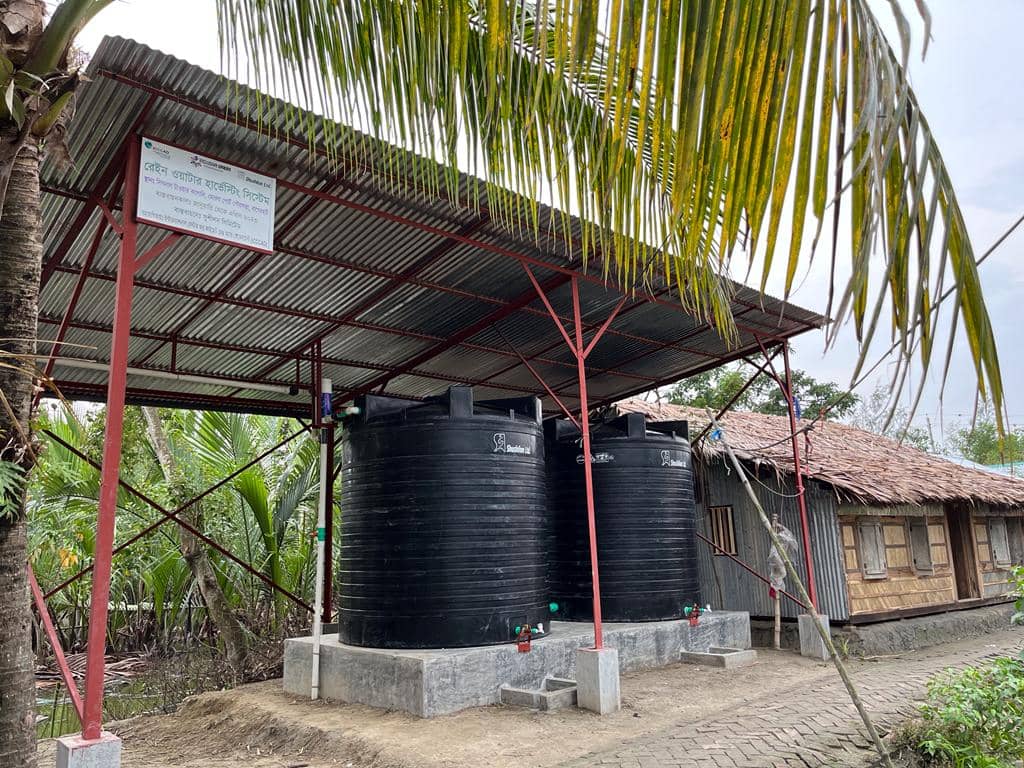
Uncovering the diverse landscape of Mongla
Upon our arrival at the Mama Port of Mongla, we had to cross the Mongla River by boat. There, I saw a flurry of activity as everyone was rushing to go home because the EPZ workers’ shift had ended. I was a little anxious because it was my first time, making it difficult for me to leap on and balance on the boat with the mass crowd, but my team was supportive.
After crossing the river, we took a van and went to our hotel. Our hotel was conveniently located near to our study area in Mongla. We had easy access to shops and restaurants in the vicinity of our accommodation which can provide added convenience and made our stay more comfortable. Staying close to our study area allowed for easy commute, saving our time and effort in transportation. It also gave me the opportunity to explore the surrounding shops and restaurants during my free time, providing a glimpse into the local culture and cuisine.
Balur Math Slum
Our first stop was Balur Math Slum which is inside the Mongla municipality, a bustling community with a vibrant atmosphere. Despite the challenging living conditions, the residents showcased an unwavering spirit of unity and determination. I had the chance to interact with the locals, hearing their stories and understanding their struggles and aspirations. Few slum dwellers even recognized my colleagues and greeted them. Our enumerators were already on the field, and they started doing their work.
The houses of Balur Math Slum were very different from those of Dhaka’s slum. There the houses were made of Golpata, tin, hay and mud. Beside every house there was small pond. People were using that pond’s water for both drinking and washing purpose. Some of the ponds were also covered with water hyacinth. I found that access to fresh drinking water remains one of the critical challenges in this slum. Rainwater is one of the sources of pure drinking water but not every house has the facility to store rainwater. Moreover, the rainfall is also not regular there. The municipality has set up piped water system there but the quality and quantity are not satisfactory for the people.
My visit to Balur Math Slum shed light on the challenges faced by the residents. Inadequate sanitation facilities, limited access to clean water, and substandard housing conditions were prevalent. However, amidst these challenges, I witnessed the resilience and creativity of the residents.
In the heart of Balur Math Slum, amidst the struggles and hardships of daily life, a resident who shouldered the responsibility of her household agreed to sit with me for an interview. She was a strong-willed woman who has faced the challenges of life with determination and grace.
As we began our conversation, it became apparent that she had endured a tragic loss. Her husband had passed away, leaving her as the sole provider for their small family. With a son who lacked a permanent job, the weight of responsibility fell squarely on her shoulders.
Water, a basic necessity of life, played a significant role in her daily existence. She relied on the municipal tap water for her needs, although it wasn’t always a consistent or reliable source. There were times when the water supply fell short, forcing her to purchase water at an additional cost.
Reflecting on her journey, she compared her life to that of two years ago. She spoke with a sense of optimism, noting that her life had indeed improved during this period. The access to better sanitation facilities and a relatively improved water supply played a pivotal role in this positive transformation. While challenges persisted, she found solace in the progress made within her community.
While visiting Balur Math I also saw that a pond was being re-excavated and widened. I think that the re-excavation of the pond in Mongla is indeed concerning, especially considering the potential negative effects on the availability of clean water in an area already facing scarcity. The presence of a direct drainage line falling into the pond raises further alarm, as it increases the risk of contamination and salinity intrusion.
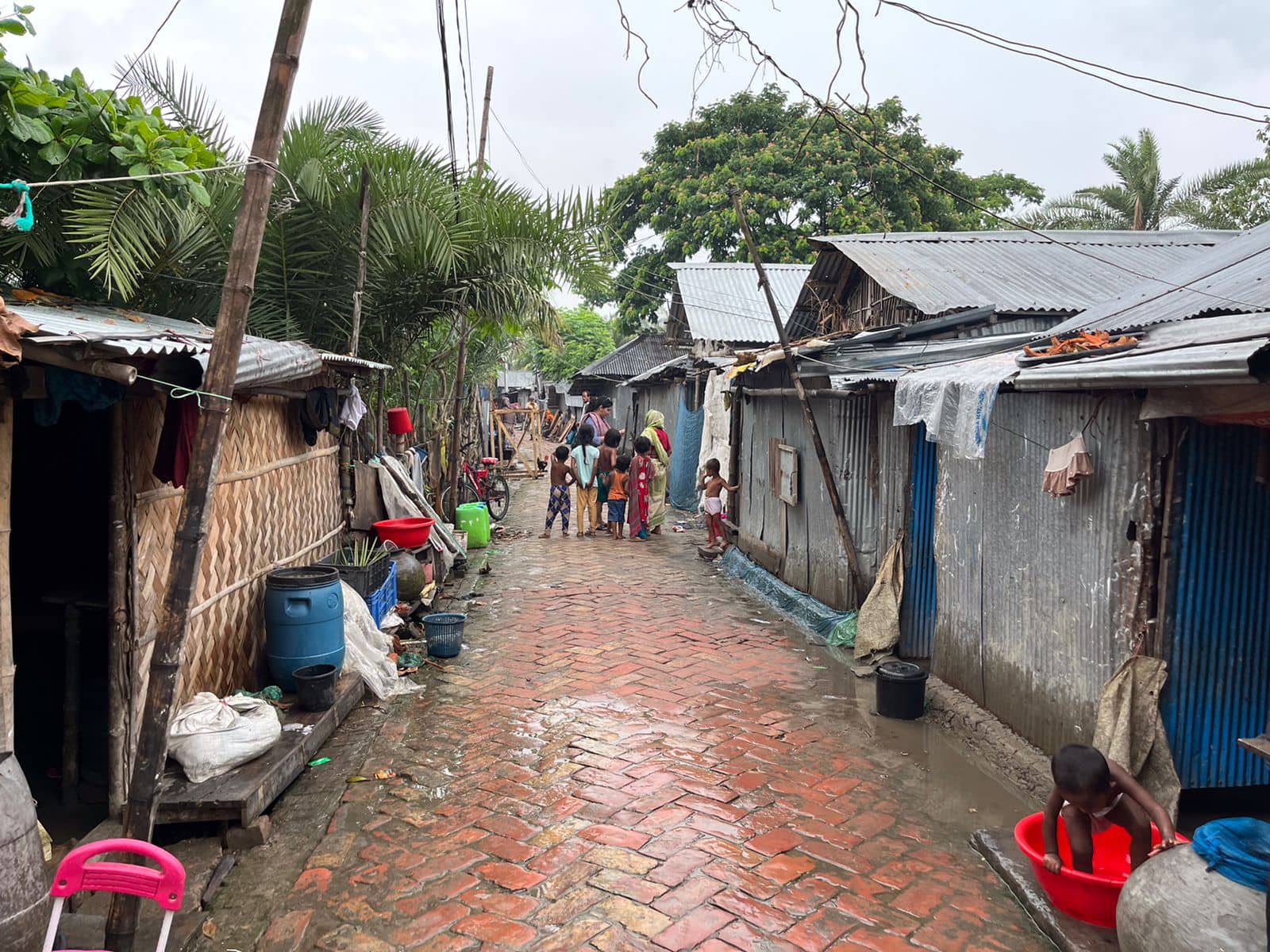
Signal Tower Colony
My next destination was Signal Tower colony, another vibrant community nestled within Mongla. This area is home to a diverse population. Here, I witnessed a strong sense of community, where people supported each other in their daily lives.
The Signal Tower Colony is next to Pasur river and on the edge of the Mongla Municipality. Access to clean drinking water continues to be a major issue in the Mongla region because of the high salinity levels.
Water is not provided via pipes to Signal Tower Colony. Residents utilize rainwater that has been harvested, but there isn’t enough to go around. Additionally, they use the freshwater they extract from their ponds for drinking and cooking. Saline water does, however, frequently mingle with pond water because of regular tidal surges. However, the locals are forced to consume this water despite having no other option, which causes them immense suffering.
I had the opportunity to interview two residents from Signal Tower colony who provided unique perspectives on their living conditions and access to clean water. Their stories shed light on the challenges faced by the community and the disparities in their experiences.
The first resident I spoke with expressed optimism, stating that her life had improved compared to two years ago. However, it was evident that access to clean water remained a significant concern. In this slum, the river water served as the primary source of water for daily activities such as washing, cooking, and cleaning. The residents had no alternative but to rely on this water, despite its potential contamination and health risks.
To ensure a safer drinking water supply, the residents resorted to purifying the river water using a traditional method involving the use of potash alum. This process helped remove impurities and sediments, making the water relatively safer for consumption. However, it was still far from ideal, as the river water itself was prone to pollution and contamination.
The second resident I interviewed had a contrasting view, feeling that her life had not improved significantly in the past two years. She, too, highlighted the lack of access to clean water as a persistent issue. The community’s limited ability to preserve rainwater further compounded the problem. Irregular rainfall patterns made it difficult for them to collect and store sufficient water during the rainy season. Consequently, the availability of water for various household purposes was greatly compromised.
The scarcity of clean water in Signal Tower colony underscored the daily challenges faced by its residents. The reliance on the river water, with its inherent risks, and the reliance on traditional purification methods painted a stark picture of the limited resources available to them. While some residents expressed cautious optimism about their lives, it was clear that the absence of adequate clean water infrastructure continued to impact their well-being.
These personal accounts from Signal Tower Slum serve as a reminder of the daily struggles endured by marginalized communities in the face of water scarcity. It underscores the importance of sustainable water management practices and the need for collective efforts to ensure equitable access to clean water for all, regardless of socioeconomic status.
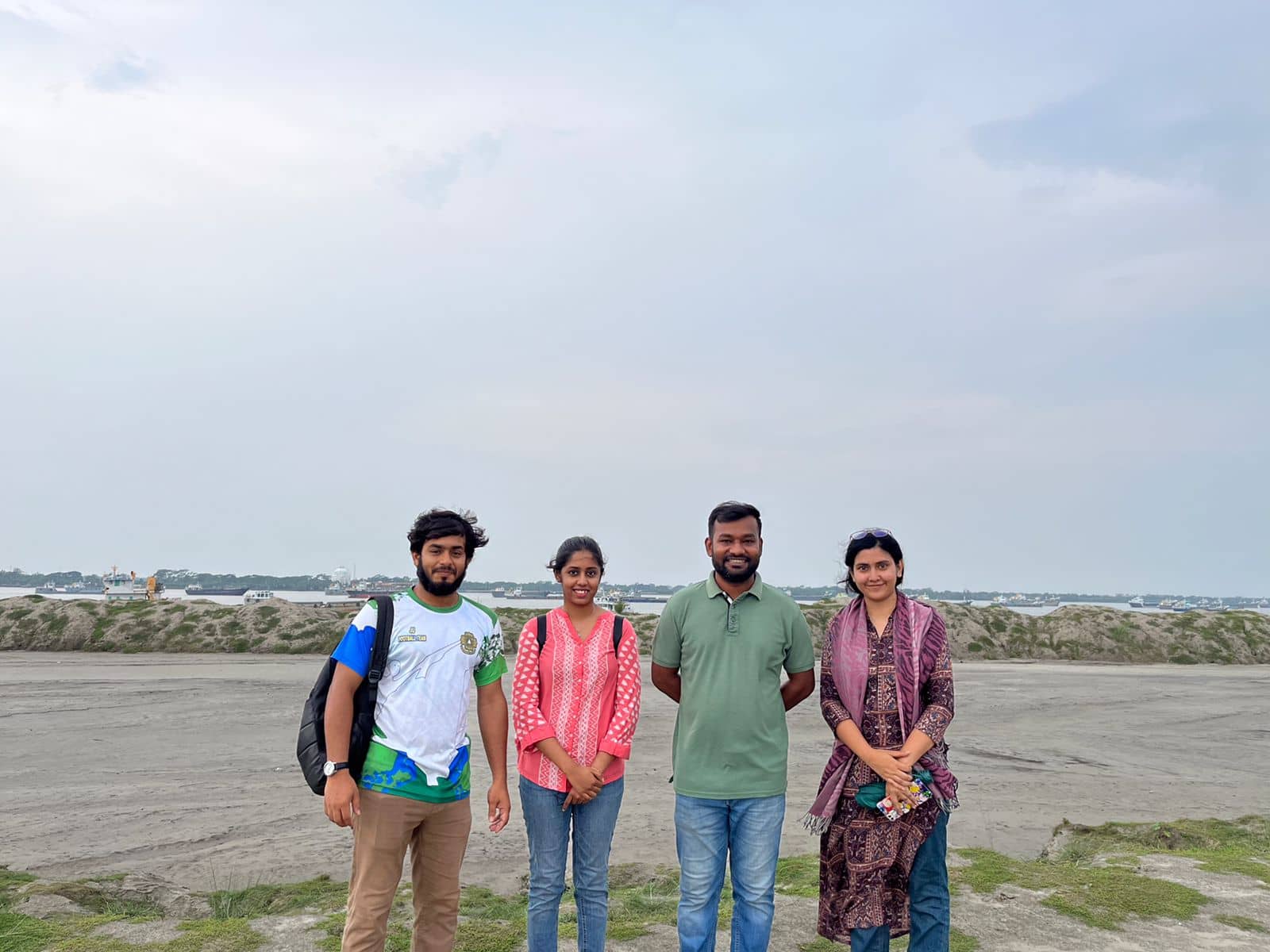
My experience
My journey through Balur Math Slum and Signal Tower Colony in Mongla was an eye-opening experience that allowed me to understand the challenges and triumphs of these vibrant communities. The resilience, unity, and creativity of the residents left a lasting impression on me. Through this blog, I hope to shed light on the often-overlooked aspects of slum life and inspire others to appreciate the strength and potential that lies within these communities.
In the slums of Mongla, Bangladesh, access to clean and safe drinking water poses a significant challenge for the residents. With rainwater being their primary source and the option of purchasing water at high prices, the community faces numerous hardships. Moreover, the use of polluted river and pond water for daily activities like drinking, washing, and cooking further exacerbates the problem. In this blog, I tried to connect with my experience on my first field visit to Mongla and tried to shed light on the water-related struggles faced by the slum dwellers, the risks associated with re-excavating a pond without considering salinity intrusion, and the coexistence of shrimp farming farms in the area.
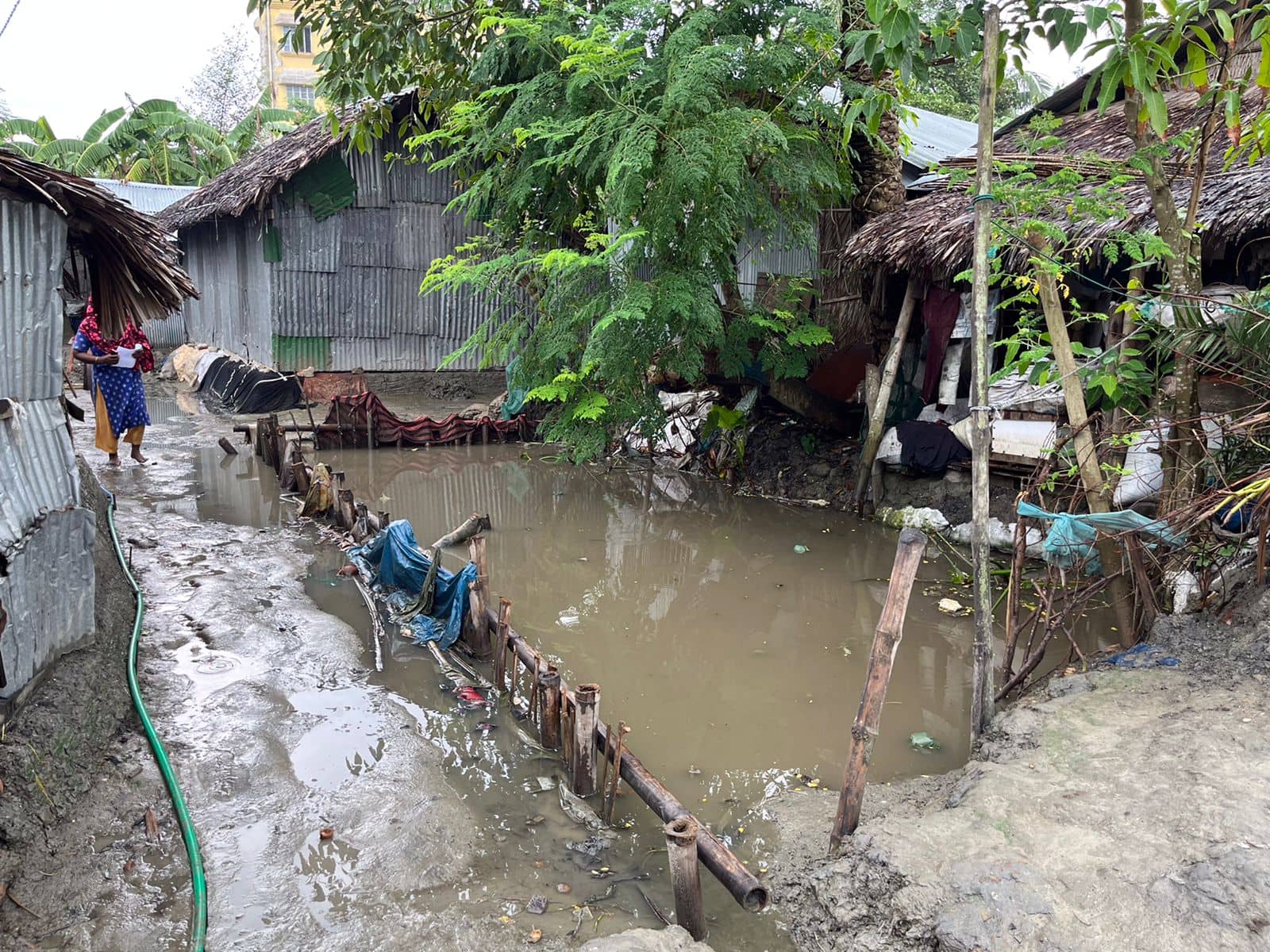
During my visit to Mongla, I witnessed the consequences of heavy rainfall in the form of waterlogging within just two days. The area’s inadequate drainage infrastructure was evident as the rainwater accumulated and caused temporary flooding in certain parts of the slum communities. The presence of waterlogging for such a short duration highlights the vulnerability of the slum communities to climate-related events. It underscores the urgent need for improved infrastructure, including efficient drainage systems, to mitigate the impact of heavy rainfall and prevent the recurrence of waterlogging.
About the Author:
Afra Sayara Rahman working as a Research Intern at ICCCAD.

